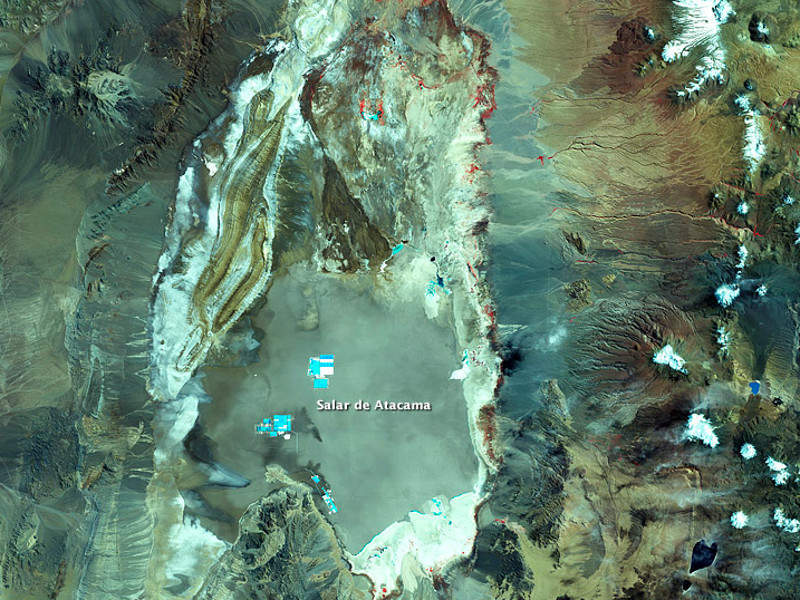Maricunga lithium project is a high-grade lithium brine deposit located in the III Region of the Atacama in Northern Chile. The Maricunga property hosts one of the highest-grade lithium mineralisations in the Americas.
The project includes seven mineral concessions namely Litio 1-6, Salamina, Cocina 19-27, Despreciada, Blanco, Camp1, and San Francisco.
Situated across 4,463ha at an elevation of 3,800m above sea level (masl), the property is owned by the Maricunga Joint Venture (Maricunga JV) comprising Lithium Power International (LPI) (51%), local Brazilian company Minera Salar Blanco (MSB, 31%) and Bearing Lithium (BRZ, 18%).
The project is estimated to produce 20,000 tonnes per annum (tpa) of lithium carbonate equivalent (LCE) over 20 years with a capital expenditure of £440m ($563m). The project has also the potential to produce 74,000tpa of potassium chloride (KCl).
The environmental impact assessment (EIA) for the project was approved by the Chilean Government in February 2020, while a definitive feasibility study (DFS) was completed in January 2019.
Construction is scheduled to begin in the second half of 2020 and first production is expected by 2023.
The Chilean Nuclear Energy Commission (CChen) granted permission to the Maricunga JV to extract 0.473 million tonnes (Mt) of lithium carbonate from the Maricunga project.
Maricunga lithium project geology and mineralization
The Maricunga deposit is a mixed salar with a 34m-thick halite nucleus. Mineralisation in the salar occurs at depths ranging between 200m and 400m.
The upper halite layer with a thickness of 55m hosts the highest brine concentration. The clay core below the upper halite layer extends to a depth of 170m.
The western and lower alluvium layers and the upper and the lower volcaniclastic layers also host significant mineralization.
The Maricunga brine solutions are saturated in sodium chloride with an average concentration of total dissolved solids (TDS) of 311g/l and an average density of 1.20g/cm³.
Other significant minerals found in the brine solution are potassium, magnesium, calcium, lithium, bicarbonate, sulfate, and boron.
Reserves of the lithium brine project
The project is estimated to contain 742,000t of lithium carbonate in proved and probable reserves, while the measured and indicated resources are estimated to be 2.07Mt.
Mining at the Maricunga lithium project
Brine extraction method will be used to mine lithium from the project. Conventional brine production wellfield will be installed and operated at the project site for brine abstraction from the salar.
Brine from the wellfield will be pumped into two transfer ponds situated near the north-west of the salar via high-density polyethylene (HDPE) feeder pipelines of 8in diameter.
It will then be pumped through 20in diameter steel or HDPE main trunk pipeline into evaporation ponds located 12km away from the plant.
A total of 13 production wells with 12in diameter stainless steel casing and 380V submersible pumping set will be drilled in the property. The depth of each well will vary between 40m and 200m.
The production target of 20,000tpa of Li2CO3 and 74,000tpa of KCl will be achieved by evaporating the extracted brine from the salar on the evaporation ponds. The evaporation process will precipitate various salts including Li+ brine and KCl.
The lithium salt is fed to the salt removal plant to concentrate the mix and remove the excess calcium in the compound.
The lithium carbonate production process will further involve steps such as removal of boron, calcium and magnesium, precipitation of lithium carbonate, and solid/liquid separation.
The brine will be purified to remove boron, calcium and magnesium, and precipitated for lithium carbonate, following which solid/liquid separation will be performed.
The final lithium carbonate will be stored in bags in a warehouse and supplied to clients on demand.
Sylvinite and carnallite, two salts rich in potassium chloride, will be collected from the evaporation ponds and fed to KCl production stage. Potassium chloride will be recovered by flotation process and then centrifuged, dried and stored for further use as potassium chloride fertilisers.
Infrastructure
The Route C-173, which is the main access road to the project, will be extended by 8km. An existing 23kV transmission line will be linked to an 8km-long spur to supply electricity for the project operations.
Water will be sourced from an industrial water storage pool, which will be fed by a well in the region of the salar.
Contractors involved
WorleyParsons prepared the DFS as well as the preliminary economic assessment (PEA) for the Maricunga lithium project.
MWH-Stantec was engaged for the preparation of the environmental impact assessment.





